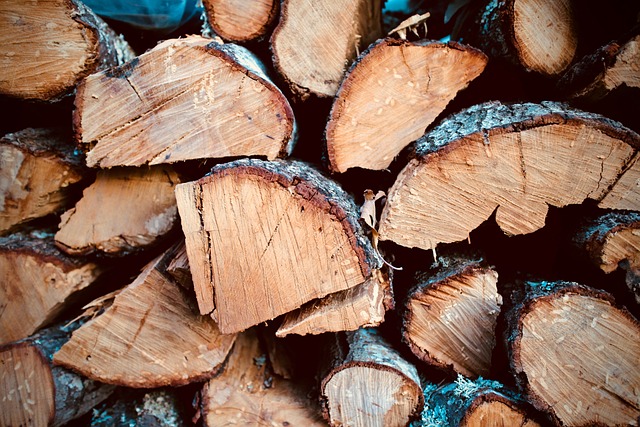Have you ever gathered around a crackling fire on a chilly evening, soaking in its warmth and comforting glow? As a fellow firewood enthusiast, I’ve often pondered: Is oak good firewood?
The answer is a resounding yes. Oak is widely considered one of the best firewood available. It offers high heat output, burns slowly, and leaves behind long-lasting embers. Its density and cooling properties make it an excellent choice for heating.
However, selecting suitable firewood goes beyond its essential qualities. In this article, I’ll explore oak firewood’s advantages, from availability and cost to proper storage techniques. We’ll also address oak’s challenges, such as its slow ignition and tendency to spark, along with precautions to take when using it.
Oak has long been prized for its strength and durability, and it’s been a favored firewood choice for generations. But what makes it stand out from the rest? And is it truly the best fit for your fireplace or wood-burning stove?
Let’s dive into oak firewood’s attributes, benefits, and critical considerations so you can make the most informed decision for your fireside moments.
Understanding Oak Firewood
Oak has earned its reputation as a reliable and versatile firewood over centuries of use. Let’s take a closer look at what makes oak firewood so exceptional.
Why Oak is a Popular Firewood Choice:
Oak’s dense nature and slow-burning properties make it a top choice for those seeking sustained heat. Its long-lasting burn is a key reason it’s been used for generations.
Common Varieties of Oak for Firewood:
Several types of oak, including white, red, and post oak, are commonly used as firewood. While each variety has its subtle differences, they all share the core traits that make oak a dependable option.
Oak’s Density and Slow-Burning Characteristics:
Oak’s high density enables it to burn steadily and consistently. This density results in a long, slow burn that keeps your space warm for extended periods, making it ideal for cold nights.
Comparing Oak to Other Firewoods:
Oak’s density sets it apart from softer woods like pine or poplar, which burn quickly and offer less sustained heat. While oak may be slower to ignite than softer woods, the effort is well worth it for the long-lasting warmth it provides.
Moisture Content and Seasoning:
Like all firewood, oak needs proper seasoning to burn efficiently. Freshly cut oak contains high moisture, so it’s essential to allow it to dry thoroughly to enhance heat output and minimize smoke and creosote buildup.
The Benefits of Oak Firewood
Oak stands out among firewood options for several compelling reasons:
High Heat Output:
Oak is renowned for its ability to produce intense heat. Its dense composition makes it perfect for heating larger spaces, especially during cold winters. A fire fueled by oak creates a cozy, inviting atmosphere.
Extended Burn Time:
Thanks to its density, oak burns longer than softer woods, reducing the need for constant refueling. This extended burn time ensures a steady source of warmth throughout the evening.
Excellent Coaling Properties:
Oak produces hot embers that last hours, maintaining a steady fire long after the flames have subsided. These coals are especially valuable for overnight heating or fire restarting the following day.
Seasoning Qualities:
Compared to other hardwoods, oak seasons relatively quickly. Properly seasoned oak burns more efficiently, generating more heat with less smoke.
Pleasant Aroma:
When burned, oak emits a pleasant, earthy aroma that enhances the fireside experience, adding to the ambiance of your fireplace or stove.
These qualities make oak a favorite firewood choice. Still, there are some factors you should consider before fully committing to it.
Considerations for Using Oak Firewood
While oak firewood offers numerous benefits, it’s essential to understand a few key factors to ensure a positive experience:
Availability and Cost:
The availability of oak firewood depends on your location. In some areas, oak is abundant; in others, it can be more expensive due to its superior qualities and higher demand. Be sure to factor in cost and accessibility.
Proper Storage:
Oak requires proper storage to maintain its quality. Store it in a dry, well-ventilated space, like a woodshed or covered rack, and elevate it off the ground to prevent moisture absorption.
Slow Ignition:
Due to its density, oak can be harder to ignite. It’s best to use dry kindling or fire starters to help get your fire going. Patience is vital, but oak rewards you with long-lasting heat once it ignites.
Sparks:
Oak firewood can produce sparks, mainly if it’s not well-seasoned. Use a spark screen or ensure your stove has the safety features to mitigate this risk.
Alternative Uses for Oak Firewood
Oak is more than just a reliable heat source—it has other interesting uses as well:
Cooking and Grilling:
Oak is highly prized for its ability to impart a smoky flavor to grilled or smoked foods. Many grilling enthusiasts use oak to enhance the taste of meats and vegetables.
Woodworking and Crafts:
Oak’s strength and attractive grain make it a favorite among woodworkers. If you enjoy DIY projects, oak firewood can be repurposed into furniture, decorative pieces, or other creative endeavors.
Why Does Oak Not Burn Well?
Though oak is considered excellent firewood, its density can make it difficult to ignite. Here are four common reasons why oak may not burn as well as expected:
- Density: Its high mass makes it slower to ignite than softer woods.
- Moisture Content: Freshly cut oak holds a lot of moisture, which makes it easier to burn with proper seasoning.
- Ignition Techniques: Oak requires more effort to ignite, often needing smaller kindling and good airflow.
- Spark Production: Oak can produce sparks exceptionally when not correctly seasoned.
Despite these challenges, with proper care, oak can be a top-tier firewood choice.
How Long Does It Take Oak to Dry?
Oak firewood generally takes 6 to 12 months to dry thoroughly, depending on climate, splitting size, and airflow. Properly seasoning oak ensures efficient burning and a high heat output.
Is Oak Safe to Burn in a Fireplace?
Yes, oak is an excellent firewood for fireplaces due to its high heat, long burn time, and pleasant aroma. However, proper seasoning and airflow are essential for safe and efficient burning.
Conclusion
Oak firewood is a reliable and rewarding choice for heating, offering high heat output, long burn times, excellent coaling properties, and a pleasant aroma. While there are considerations such as availability, cost, and ignition challenges, the benefits of oak far outweigh the drawbacks. Whether you’re using it for warmth, cooking, or woodworking, oak firewood is a versatile and dependable choice for any fireside occasion.
Related: Is Silver Maple Good Firewood? A Comprehensive Guide





